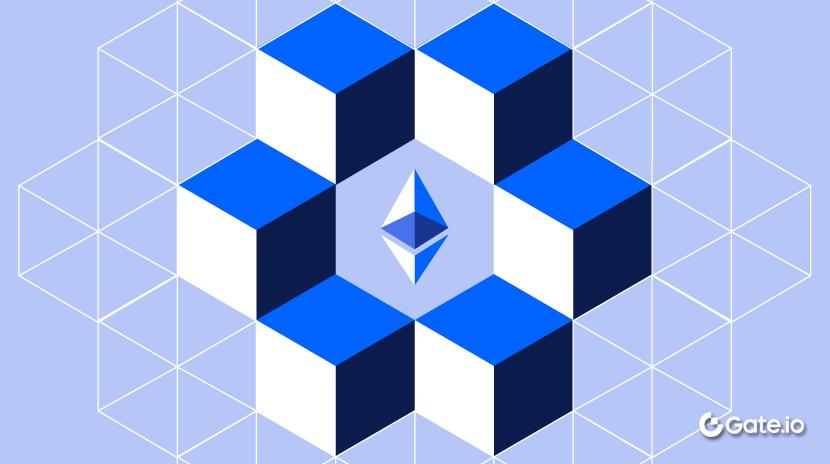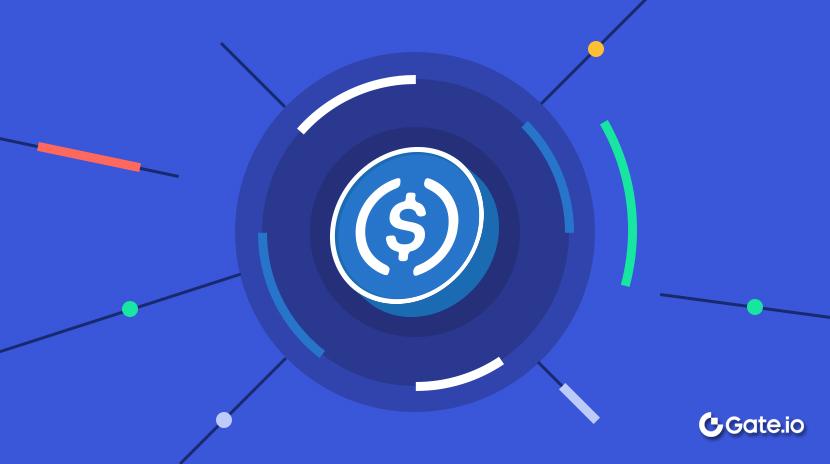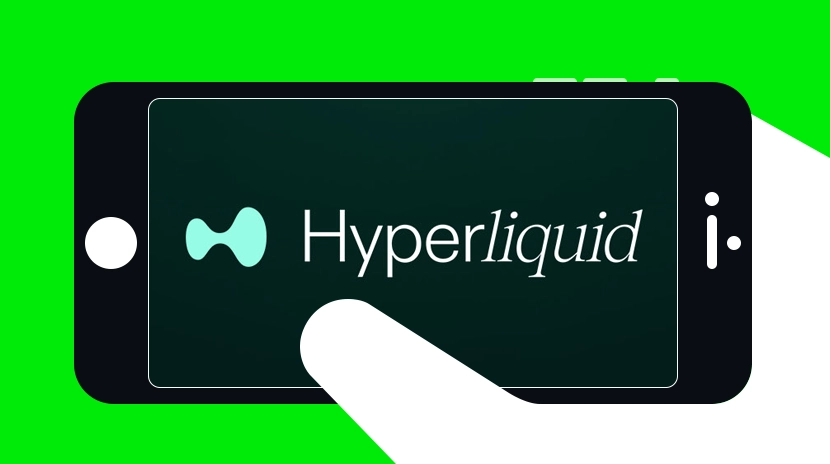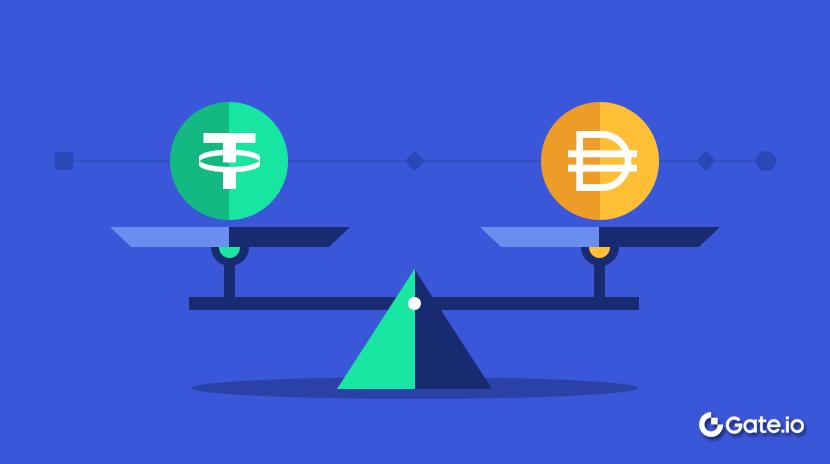Penambangan Kutipan Protokol NEST: Jaringan Oracle DeFi Generasi Berikutnya
Gambaran Umum Protokol NEST
NEST Protocol adalah infrastruktur perdagangan terdesentralisasi yang dirancang berdasarkan konsep jaringan martingale dan perdagangan, yang menghilangkan pembuat pasar dan penyedia likuiditas. Ini adalah protokol jaringan orakel terdesentralisasi, yang dapat diterapkan dalam pertukaran kontrak terdesentralisasi, supermarket derivatif keuangan, lindung nilai risiko on-chain dan off-chain, kerangka ekonomi Metaverse dan GameFi, lotere, sintesis prop, dan banyak lagi.
NEST juga menyediakan alat pengembangan gratis untuk pengembang dan alat investasi seperti NEST Fi untuk pengguna umum. Sebelum terjun ke NEST, mari kita memahami Protokol dan Oracle.
Apa itu Protokol?
Sebuah protokol, dalam istilah yang lebih sederhana, adalah seperangkat aturan yang diikuti oleh komputer dan sistem telekomunikasi untuk berkomunikasi satu sama lain. Ini memastikan bahwa ketika dua perangkat bertukar data, mereka saling memahami dan merespons dengan benar.
Protokol bersifat publik dan transparan, artinya siapa pun dapat menggunakannya dan memungkinkan komunikasi langsung tanpa perantara. Mereka diatur dalam lapisan-lapisan, masing-masing melayani tujuan tertentu. Sebagai contoh, HTTP dan HTTPS, yang kita lihat dalam alamat web, merupakan bagian dari lapisan aplikasi protokol TCP/IP. Protokol-protokol ini adalah dasar untuk semua layanan internet seperti Google, Facebook, dan Twitter.
Protokol memainkan peran yang sama di dunia mata uang kripto dengan memungkinkan transaksi yang aman dan tanpa kepercayaan pada pihak ketiga. NEST Protocol adalah salah satu protokol jaringan Oracle terdesentralisasi yang memfasilitasi hal ini.

(Source: Sumber gambar: ithelp - DAY 23 [Web] Internet Protocol - TCP/IP)
Apa itu Protokol NEST?
NEST Protocol adalah protokol DeFi yang dibangun di atas blockchain Ethereum, dirancang untuk menyediakan data harga yang akurat dan dapat diandalkan untuk keuangan terdesentralisasi (DeFi). Ini mencakup tiga modul utama: NEST Oracle, NEST Asset, dan NESTcraft, dengan NEST Oracle dan NESTcraft membentuk inti protokol.
Mengapa Oracle Penting? Aplikasi dan Kelebihannya
Orakel menghubungkan blockchain dengan data dunia nyata, memungkinkan kontrak pintar berinteraksi dengan data eksternal.
Hal ini penting karena blockchain tidak dapat langsung mengakses data di luar blockchain. Oracle memastikan bahwa aplikasi blockchain dapat beroperasi dengan informasi dunia nyata. Awalnya, oracle bukanlah fokus utama, tetapi dengan pertumbuhan DeFi dan NFTFi yang cepat, mereka menjadi semakin penting. Mereka digunakan dalam peminjaman, asuransi, otomatisasi, stablecoin, pasar prediksi, perjudian, IoT, dan manajemen rantai pasokan.
Orakel menguntungkan karena desentralisasi mereka, kompatibilitas tinggi, dapat diupgrade, dan generalitas yang kuat. Mereka meningkatkan fleksibilitas kontrak pintar dan mempromosikan integrasi dengan sistem tradisional. Namun, mereka juga menghadapi tantangan yang perlu diatasi.
Tantangan untuk Oracle Terdesentralisasi
Sumber data yang dapat diandalkan sangat penting untuk DeFi dan dApps. Praktik industri DeFi saat ini melibatkan penggunaan node "terpercaya" untuk mengunggah harga aset dari bursa terpusat, tetapi metode ini memiliki isu verifikasi. NEST mengusulkan solusi oracle terdistribusi dengan lima poin kunci:
- Akurasi: Harga harus mencerminkan tingkat pasar dengan akurat.
- Sensitivitas: Harga harus merespons dengan cepat terhadap tren pasar.
- Ketahanan Serangan: Biaya tinggi bagi penyerang untuk mengganggu harga.
- Verifikasi Langsung: Verifikator pihak ketiga tanpa tinjauan terpusat.
- Penawaran Terdistribusi: Terbuka untuk siapa pun untuk bergabung atau meninggalkan kapan saja, di mana saja.
Mencapai kelima poin tersebut menantang, oleh karena itu NEST memprioritaskan penawaran terdistribusi daripada sensitivitas.
Bagaimana NEST Protocol Bekerja?
NEST adalah oracle harga terdesentralisasi yang menentukan harga melalui sistem di mana penambang memberikan penawaran bilateral. Jika verifikator melihat perbedaan antara harga yang dikutip dan harga pasar, mereka dapat memanfaatkan perbedaan ini untuk menghasilkan keuntungan, sehingga memperbarui harga pada blockchain. Oracle terdesentralisasi lainnya, seperti Chainlink, menggunakan jaringan node untuk memasukkan data harga ke dalam kontrak on-chain. Selain itu, oracle cross-chain seperti PlugChain dan oracle terdesentralisasi seperti ADAMoracle mendukung pemberian harga dari node area luas.
Protokol NEST beroperasi berdasarkan konsep Martingale, terdiri dari tiga modul utama: NEST Oracle, NEST Asset, dan NESTcraft. Komponen inti yang mendorong protokol adalah NEST Oracle dan NESTcraft.
- NEST Oracle: Modul ini menyediakan informasi harga terdesentralisasi di blockchain. Ini menggunakan mekanisme penambangan kutipan yang memberi imbalan kepada kedua pengutip dan pemeriksa.
- Aset NEST: Token NEST dibuat dan dihancurkan oleh kontrak pintar NEST, memberikan imbalan kepada peserta dalam modul Oracle. Token ini digunakan sebagai unit mata uang untuk perdagangan dalam sistem NEST.
- NESTcraft: Ini adalah mesin virtual NEST (PVM), mirip dengan EVM Ethereum. Ini mengubah berbagai data acak on-chain menjadi perpustakaan fungsi Martingale komprehensif melalui ILM (Infinite Liquidity Maker). NESTcraft menawarkan beberapa opsi perdagangan yang dapat disesuaikan, penting untuk skalabilitas protokol NEST.
Mekanisme Kutipan Oracle NEST
Peserta Utama dalam Protokol NEST: Penentu Harga & Pemanggil Harga.
Dengan protokol NEST, mengaktifkan saluran penawaran mudah dengan beberapa pengaturan dasar: pasangan penawaran, ukuran penawaran, biaya komisi, dan token jaminan. Satu saluran dapat mendukung beberapa pasangan penawaran.
- Penentu Harga: Ini termasuk penambang penawaran (ditandai sebagai O) dan verifikasi (ditandai sebagai A). Siapa pun dapat menjadi O atau A. O memberikan penawaran untuk mendapatkan imbalan token NEST (ERC-20), dan A memverifikasi harga. Jika harga menyimpang dari harga pasar, A dapat melakukan perdagangan pada harga ini untuk mendapatkan keuntungan tetapi juga harus memberikan penawaran baru. A tidak perlu membayar komisi atau berpartisipasi dalam penambangan.
- Pemanggil Harga: Biasanya, protokol DeFi lain atau institusi (ditandai sebagai C). Mereka membayar biaya untuk menggunakan protokol NEST untuk penawaran harga.
Penambangan Kutipan & Verifikasi Harga
Misalkan seorang penambang O ingin menawarkan: 1 ETH = 100 USDT. Dia mentransfer ETH dan USDT ke dalam kontrak penawaran, mengatur ukuran menjadi xETH dan 100xUSDT, dan membayar komisi sebesar λxETH. Dia kemudian berpartisipasi dalam penambangan berdasarkan ukuran dan komisi yang ditetapkan untuk mendapatkan imbalan token NEST.
Setelah O mengirimkan aset dan harga ke kontrak penawaran, verifier A, yang melihat peluang arbitrase, dapat melakukan perdagangan ETH atau USDT sesuai dengan penawaran O. Hal ini memastikan bahwa harga pembuat pasar adalah harga pasar yang adil atau nilai yang O anggap setara untuk kedua aset tersebut. Karena O percaya bahwa 1 ETH sama dengan 100 USDT, tidak masalah aset apa yang diperdagangkan oleh verifier.
Periode Verifikasi Harga
Ketika seorang verifier melakukan perdagangan, ini menandai periode verifikasi harga, yang ditandai sebagai T0. Periode ini menentukan waktu dan sensitivitas paparan risiko quoter. Setelah periode verifikasi berakhir, quoter dapat menarik aset kapan saja. Penawaran yang tidak terisi menjadi penawaran yang efektif, termasuk harga dan ukuran. Jika hanya sebagian dari penawaran terisi, bagian yang tersisa tetap dihitung sebagai penawaran yang efektif. Mengatur periode verifikasi menjadi 5-10 menit menyeimbangkan keterlambatan harga relatif terhadap harga pasar, dapat diterima untuk sebagian besar DeFi.
Harga Rantai & Harga Blok
Setelah verifier mengonfirmasi harga quoter, mereka harus segera mengusulkan harga baru. Jika seseorang melakukan perdagangan pada harga baru ini, mereka juga perlu mengusulkan harga baru, membentuk rantai harga. Harga-harga ini dicatat di blockchain, menciptakan harga blok atau NEST-Price. Harga blok sebelumnya digunakan jika tidak ada penawaran yang efektif untuk blok tersebut.
Sekuensi Harga & Volatilitas
Setiap blok jaringan Ethereum sesuai dengan NEST. Sekuens harga ini membantu sistem DeFi menghitung harga rata-rata dan volatilitas. Mekanisme seperti penjualsian harga dan peningkatan ukuran kutipan mencegah penyerang mengganggu sistem harga, sehingga mahal bagi penyerang. Hal ini meningkatkan keamanan sistem verifikasi harga.
Mesin Virtual Probabilitas NESTcraft (PVM)
Protokol NEST adalah infrastruktur Web3 berbasis PVM, yang memungkinkan generasi dan pemrograman aset acak. Dengan menggunakan PVM, pengembang dapat dengan mudah dan aman membuat aset on-chain.
NESTcraft menggabungkan fungsi martingale yang mirip dengan mesin virtual Ethereum, memperluas ruang lingkup aplikasi NEST dan mengubahnya menjadi infrastruktur berbasis rantai. Ini memungkinkan siapa saja untuk membuat lebih banyak aplikasi berbasis NEST.
Logika dasar PVM NEST sama dengan EVM, sehingga semua pengembangan EVM dapat diimplementasikan pada PVM. Program EVM adalah kombinasi kode dasar yang dapat dipanggil dengan membayar biaya gas. Pendapatan produk PVM adalah kombinasi linear dari fungsi pendapatan dasar, yang dapat diperoleh dengan membayar biaya tertentu (yaitu, nilai pendapatan diskon).

Sumber: whitepaper Protokol NEST
Pustaka Fungsi Martingale
Menerapkan DeFi atau dApps sering kali membutuhkan aliran informasi martingale yang luas atau kluster fungsi transformasi dasar. NEST telah merancang fungsi-fungsi umum ini ke dalam cluster fungsi dasar yang disebut perpustakaan fungsi Martingale, yang merupakan inti dari NESTcraft.
Dengan menggunakan Protokol NEST, Anda dapat membuat halaman front-end NESTcraft dan menautkannya ke EVM untuk mengembangkan pertukaran terdesentralisasi atau aplikasi lain.

Sumber: whitepaper Protokol NEST
Mekanisme Pencegahan Serangan Protokol NEST
Ketika aset DeFi besar bergantung pada NEST-Price, mereka dapat menjadi target serangan. Penyerang mungkin memanipulasi penawaran normal p0 untuk mengubahnya menjadi p1 atau terlibat dalam perdagangan jahat, berharap harga tidak akan diperbarui (karena begitu harga diperdagangkan, tidak dapat diadopsi atau diperbarui). Mekanisme penetapan harga gagal jika penyerang bersedia mengorbankan selisih antara P1 dan P0 untuk keuntungan yang lebih besar.
Bagaimana NEST Mencegah Serangan?
Rantai harga itu sendiri bertindak sebagai mekanisme anti-serangan. Setelah menyerang harga, penyerang harus menyediakan harga alternatif dan aset yang sesuai. Menurut algoritma anti-serangan, kutipan verifikator harus melebihi rentang kutipan. Sistem memungkinkan hingga 4 putaran verifikasi yang diperbesar untuk aset yang dikutip, dan aset jaminan juga akan diperluas tanpa batasan 4 putaran. Oleh karena itu, NEST mencegah sistem dari serangan dengan meningkatkan dan memperbesar biaya penyerang.
Produk dan Ekosistem Protokol NEST
Jaringan martingale dan NESTcraft Protocol NEST menyediakan dukungan teknis bagi pengembang dan memecahkan masalah aset penitipan (manajemen risiko) dan likuiditas dalam perdagangan derivatif, menawarkan banyak kemungkinan aplikasi. Ini termasuk pertukaran terdesentralisasi, supermarket derivatif keuangan, lindung nilai risiko on-chain dan off-chain, kerangka ekonomi Metaverse dan GameFi, lotere, sintesis prop, dan aplikasi lain yang tidak terdefinisi. Saat ini, NEST memiliki lebih dari 60 mitra ekosistem, seperti yang ditunjukkan di bawah ini:

Sumber: nestprotocol.org
Selain proyek kemitraan, NEST juga telah mengembangkan DeFi dan NFT sendiri:
NEST Fi
NESTFi adalah pertukaran tak terbatas terdesentralisasi berdasarkan NESTcraft. Ini menggunakan kontrak pintar sebagai rekan dagang. Kerugian pedagang dibakar oleh kontrak pintar, dan keuntungan dicetak oleh kontrak pintar. Dengan menghilangkan ketergantungan pada mitra terbatas atau pembuat pasar, NESTFi memastikan likuiditas yang berkelanjutan untuk perdagangan. Model ini menguntungkan pedagang sebagai peserta proyek. Semakin banyak peserta yang bergabung, potensi keuntungan pedagang meningkat dengan nilai token sistem yang meningkat.
Tinta Siber
Cyber Ink NEST adalah NFT yang dibangun di atas NEST PVM. Ini menggabungkan karakteristik cyber dan tinta, menciptakan gaya seni baru yang disebut cyber ink. Kami menciptakan serangkaian karya seni NFT berbasis AI, manusia, dan pandangan dunia spasial dalam Cyber Ink NFT. Sebanyak 10.000 NFT telah diterbitkan, dan setiap Cyber Ink dapat membuka keanggotaan NEST Fi dan manfaat tambahan. Mereka dapat ditambang di NEST Financial Market dengan harga 99,9 NEST atau dibeli di toko NFT seperti element dan PearDAO.
Pelajari lebih lanjut tentang pandangan dunia NEST Cyber Ink - Kisah Klub Enam Orang
Tim NEST dan Investor
NEST adalah tim yang anonim, dan seluruh proyek ini diawasi oleh NEST DAO. Protokol NEST memiliki tiga investor institusional: Zonff Partners, MetaWeb Ventures, dan Outliers Fund. Anggota NEST DAO terutama terdiri dari organisasi-organisasi berikut:

Sumber: nestprotocol.org
- Akademi Riset NEST (NRA): Akademi ini terdiri dari praktisi dari lembaga akademik dan industri di Eropa dan Amerika Utara. Tujuannya adalah untuk memberikan dukungan teknis dan teoritis untuk kategori baru dan menjaga kemitraan jangka panjang dengan Vitalik, Ethereum Foundation, Coindesk, dan Consensus.
- NEST Influence Block (NIB): Terutama mempromosikan NEST dan meningkatkan pengaruh merek, bekerja sama dengan Vitalik dan Ethereum Foundation, mendirikan TikTok, Telegram, dan Discord, serta mengelola dana hibah dan ekosistem.
- NEST Developer Alliance (NDA): Bertanggung jawab untuk pengembangan inti protokol dan aplikasi periferal, menciptakan komunitas pengembang seperti hackathon.
- NEST Community (NC): Bertanggung jawab terutama untuk pertumbuhan komunitas dan mempromosikan konsensus, mempromosikan dan mengelola pemegang NEST, bertujuan untuk menjadi komunitas terdesentralisasi terbesar di industri ini.
Inti NEST & Mekanisme Ekonomi
NEST adalah token asli dari Protokol NEST, diterbitkan di blockchain Ethereum sebagai token ERC-20. Pasokan maksimum token NEST ditetapkan pada 10 miliar. Menurut CoinMarketCap, total pasokan token NEST adalah 9.978.035.000 NEST, dengan pasokan beredar sebesar 2.911.743.948 NEST.

Sumber: Protokol NEST TOKENOMICS
Tidak Ada Penjualan Pribadi, Tidak Ada Pre-Mining: Semua token NEST ditambang melalui penambangan kuota
Penambang mendapatkan token NEST dengan membayar komisi ETH dan mengambil beberapa risiko volatilitas harga. Verifikator mendapatkan keuntungan secara langsung berdasarkan penyimpangan harga sementara juga mengambil risiko mengutip transaksi. Dengan demikian, biaya/imbalan untuk verifikator relatif jelas, sedangkan untuk penambang, model penambangan kutipan membutuhkan landasan ekonomi.
Semua token dalam ekosistem NEST dihasilkan melalui penambangan, tanpa alokasi awal atau pra-penambangan. Semua biaya yang dikeluarkan dalam menghasilkan NEST dikembalikan kepada pemegang NEST, dan NEST hanya digunakan untuk insentif.
Kolam Pertambangan
80% dari token (yaitu, 8 miliar token) akan digunakan untuk memberi imbalan kepada penambang NEST, melepaskan 24 token NEST per blok.
Pembebasan Peluruhan
Untuk setiap 2.400.000 blok, hadiah blok akan berkurang 20%. Proses peluruhan ini akan berlanjut sampai hadiah blok berkurang menjadi 2,4 NEST, setelah itu hadiah akan ditetapkan pada 2,4 NEST per blok.
Memasuki Penambangan Peredaran Aset DAO
Saat semua 10 miliar token telah ditambang, fase baru akan dimulai, dengan konten spesifik yang akan ditentukan melalui pemungutan suara komunitas.
Pool Penambangan NEST NODE
15% dari token NEST (yaitu, 1,5 miliar token) akan digunakan untuk memberi imbalan kepada node NEST, melepaskan 4,5 token NEST per blok.
Insentif DAO
5% dari total pasokan akan digunakan untuk insentif di blockchain lain, termasuk Polygon, BNB, KCC, MAP, dan chain masa depan.
Mekanisme Penurunan Nilai
Pasokan token NEST akan secara bertahap berkurang. Semakin banyak protokol yang bergabung dan menggunakan NEST, pasokan token akan semakin berkurang, sehingga membuatnya lebih berharga.
NEST Versi terbaru 4.4 Memperbarui
- Peningkatan Teknis: Memungkinkan beberapa kutipan aset. Satu kontrak pintar dapat memulai aliran data harga untuk lebih dari sepuluh aset berbeda, secara signifikan menghemat biaya gas dan meningkatkan efisiensi unggahan.
- Perbaikan Model Ekonomi: Menghilangkan komisi penawaran. Sekarang, mendapatkan penawaran dari NEST gratis. Sementara itu, output pencetakan telah menurun seperenam. Pertumbuhan pasokan yang beredar lebih lambat, kurang dari 3% per tahun. Dalam jangka panjang, perubahan ini akan terus meningkatkan nilai NEST. Jumlah total NEST tidak akan melebihi 3.000.000.000 (3 miliar). Ambang batas untuk memberikan informasi harga rendah, hanya membutuhkan 0,01 ETH dan aset dengan nilai setara.
Ringkasan: Apakah NEST Investasi yang Baik?
NEST Protocol menawarkan keuntungan yang mengubah permainan, menggunakan kontrak cerdas untuk menyediakan mitra perdagangan tanpa batas dan mengatasi masalah aliran perdagangan DeFi. Sementara orakel lain masih mengunggah data harga di rantai, NEST Oracle dapat langsung memuat data harga di rantai dengan sistem penawaran inovatifnya. NESTcraft memperluas kemungkinan untuk DeFi dan berbagai aplikasi Dapp. Token ini distabilkan melalui mekanisme penambangan dan deflasi, memastikan token NEST menghargai secara stabil. Namun, meskipun potensi besar NEST Protocol dalam keuangan terdesentralisasi, ada kekurangan potensial seperti:
- Risiko Manipulasi Harga: Meskipun NEST menggunakan amplifikasi biaya serangan yang tak terbatas untuk menahan serangan, harga masih dapat dimanipulasi di pasar likuiditas rendah.
- Risiko Teknis: Protokol NEST bergantung pada kontrak pintar dan teknologi blockchain. Terlepas dari audit kontrak pintar pihak ketiga, setiap kekurangan teknis atau kesalahan kontrak dapat menyebabkan kerugian dana atau sistem crash. Contoh terbaru adalah LI.FIprojek di dalam ekosistem NEST, yang memiliki kerentanan kontrak pintar, menyebabkan dompet diatur untuk persetujuan tanpa batas.
Risiko Potensial Lainnya: Termasuk model ekonomi dan penerimaan pasar. Meskipun token NEST deflasi dan mempromosikan tata kelola dan partisipasi dalam ekosistem, pasokan total relatif tinggi dibandingkan dengan protokol lainnya. Hanya mengandalkan mekanisme deflasi terbatas. Meningkatkan kasus penggunaan token NEST untuk mendorong permintaan dapat lebih meningkatkan nilai token.
Artikel Terkait

Bagaimana Mempertaruhkan ETH?

Apa itu Tronscan dan Bagaimana Anda Dapat Menggunakannya pada Tahun 2025?

Apa itu USDC?

Apa Itu Narasi Kripto? Narasi Teratas untuk 2025 (DIPERBARUI)

Apa itu Hyperliquid (HYPE)?
